Episode 382: Slow Flowers’ 2019 Floral Insights & Industry Forecast
January 2nd, 2019
Podcast: Play in new window | Download
Subscribe: Apple Podcasts | Podcast Index | RSS | More
Happy New Year 2019!
I’ve finally put away the holiday decorations and with my thoughts already turning to the spring garden, it’s time to look to the future. Our BIG NEWS for 2019 is the launch of a one-stop web site for all-things Slow Flowers. Please visit our newly-branded site on the web — SlowFlowersSociety.com.
It is fresh, user-friendly and gives you access to all of the Slow Flowers programs, events and channels in one place.
Why the Society? Our focus hasn’t changed. In fact our mission continues. Which is: to change the flower sourcing practices of consumers and professionals through outreach and education that highlights the benefits of local, seasonal and domestic floriculture — and to build a movement that promotes cultivation and sales of those flowers while nurturing authentic connections between consumers, farmers, and florists.
Slowflowers.com is now part of the Slow Flowers Society underscores our inclusive community dedicated to preserving domestic floral farms and supporting safe, seasonal and local supplies of sustainablyfarmed flowers and foliage. Our members are engaged in all facets of the U.S. floral industry.
I’m excited to share highlights from the annual Slow Flowers’ Floral Insights and Industry Forecast.
This report originated in the fall of 2014, when I traveled to NYC to meet with garden and lifestyle media as part of the launch of Slowflowers.com. The publicists helping me, Lola Honeybone and Marla Kramer, suggested I produce a powerpoint presentation to help illustrate the central themes of the Slow Flowers movement. It was a great tool to walk editors and writers through our platform, and to discuss shifts taking place in the floral marketplace that directly reflected significant changes in how flowers could be grown, designed and marketed.
When 2015 rolled around just months later, I shared those insights on this Podcast — and it became the first of our annual ritual.
For each of the past five years, I have drawn from a number of sources to develop this annual forecast. Sources include hundreds of my first-person interviews for print and digital stories, input gathered from the Slow Flowers Community, conversations with past guests of the Slow Flowers Podcast and idea-exchanges with other progressive leaders in the floral marketplace — farmers, florists and design creatives — who together inspire this “floral futures” report.
I hope you find these forward-thinking resources important and valuable. I’d love to hear your feedback and suggestions. Find an expanded version of this report, including a free PDF [Download here: Slow Flowers Forecast 2019].
You can also find an executive summary of the report in the pages of the brand new January 2019 edition of Florists’ Review.
A note about our programming change for 2019. Because of so much demand — all good — from podcast sponsors, we are trying something a little different for 2018. Rather than giving you a lengthy sponsor list at the end of the show, I’ll highlight just three sponsors during the episode — at the beginning, our mid-show break – and at the end.
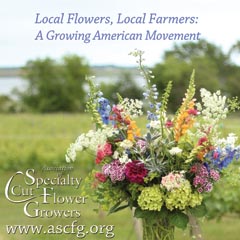 First up: the Association of Specialty Cut Flower Growers.
First up: the Association of Specialty Cut Flower Growers.
Formed in 1988, ASCFG was created to educate, unite, and support commercial cut flower growers.
Its mission is to help growers produce high-quality floral material, and to foster and promote the local availability of that product.
Learn more at ascfg.org. And check out the web site for details about the upcoming Focus on the Business of Cut Flowers Conference, set for Feb 18-19 in Denver.
Seven of the experts presenting at the conference are past guests of the Slow Flowers Podcast, so you’ll recognize some familiar names and topics in the lineup!
The title of this year’s 2019 Slow Flowers’ Floral Insights and Industry Forecast is TRACKING FLORAL FUTURES
I know you’ll agree with me that the floral professional’s role is to connect consumers with the natural world through artistry and design. So it’s no surprise that this year’s emerging themes include ideas and concepts that strengthen community ties with values-driven consumers, as well as nurture entrepreneurial innovation in horticulture and floriculture. If you’re an “early adopter,” these concepts may resonate or reinforce your current approach to sustainable design.
In recent months, I’ve shared many of these ideas at top industry venues, including Hitomi Gilliam’s Trend Summit 2018, the Association of Specialty Cut Flower Growers‘ annual conference and the Southern Flower Symposium. I’ll also share this report at an upcoming member-only event for the Seattle Wholesale Growers Market on Jan 23rd. Find more details here.
Number #1 Experiences, Not Conveniences
In a retail climate where Amazon is king, those who engage floral consumers in authentic, tactile, visceral experiences will break through the click-and-buy or cash-and-carry mindset. Customers who connect with you, your story, your flowers and the origin of those flowers are the foundation of your loyal tribe.
And while efforts and actions that strengthen our ties with customers isn’t an entirely new concept, it is one you must habitually practice, especially in today’s cluttered and distracting marketplace. Events, tours, workshops and other experiential programming are critical — and much more powerful than touching customers through social media channels alone.
Many of you have a deep understanding of the power of experiences, and my advice to you is to continue investing time, resources and creativity to offer the floral marketplace a chance to forge a relationship with you and your flowers.
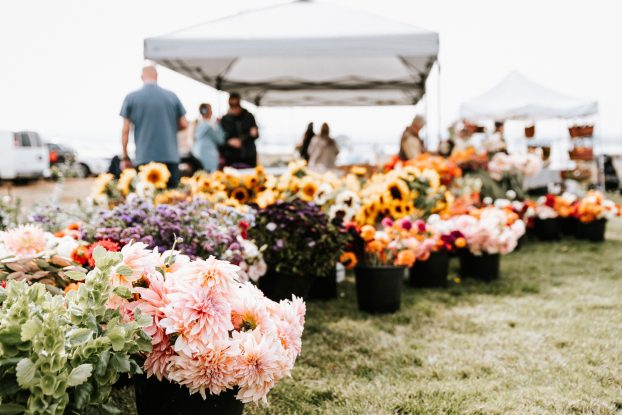
A Flower-Filled Community Festival at My Garden Over Floweth — all about EXPERIENCES! (c) Courtney Coriell Photography
For example, Slow Flowers members Teresa Engbretson and Katie Elliott of My Garden Over Floweth, open their Paterson, Wash., farm for two seasonal “Flower Fling” festivals each year. These farmer-florists have created events that provide a sense of community for their customers, while also offering a new venue for other vendors. In their recap post after the Fall Fling, they wrote:
We place so much thought, time and care into planning the best experience we possibly can and we hope that shows! This is a space and a time where memories are made and we hope each and every person felt a warm welcome. We felt so much love yet again by all who attended, including amazing local vendor family. Each vendor and their products speak to hard work, quality and friendship, we are so honored to have so many great people surrounding us at our farm!
You don’t have to be a professional event planner to pull off an experience-rich program. Not at all. Start small and open your studio or farm gate to flower lovers — you’ll be positively rewarded.
Number #2 Artisan, Not Mass-Produced
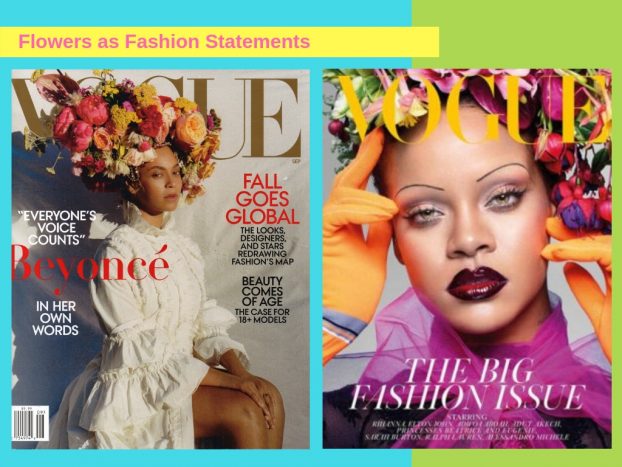 When you embrace this artisan ethos, the conversation moves away from the perception that flowers are a price-sensitive commodity and embraces the belief that flowers are a higher, value-added work of art.
When you embrace this artisan ethos, the conversation moves away from the perception that flowers are a price-sensitive commodity and embraces the belief that flowers are a higher, value-added work of art.
As botanical ingredients migrate further into the worlds of fashion and couture (yes, Beyoncé and her floral headpiece appearing on the cover of last September’s Vogue comes to mind), they are quickly becoming objects of desire in a new way. The explosion of floral wearables, floral couture and jewelry alike, ignites the imaginations of your clients. Handcrafted products, as well as botanical collections, will differentiate you and your brand.
The idea of flowers as fashion is definitely a theme of American Flowers Week, and I’m so pleased that the Slow Flowers Community of floral designers and flower farmers have adopted this annual promotion as a vehicle for showcasing domestic, seasonal and local flowers as runway-worthy. I can’t wait to reveal the 2019 botanical fashion looks in June!
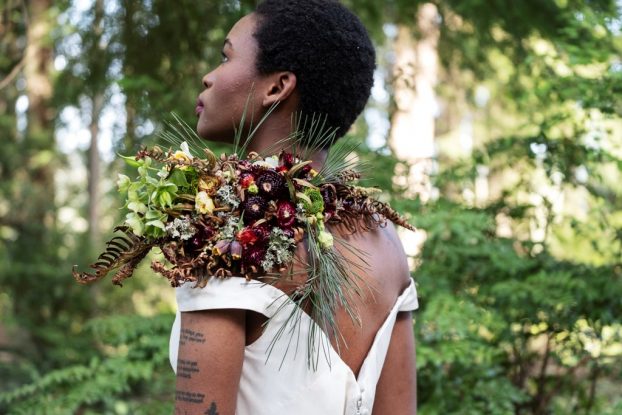 To accompany this report in Florists’ Review, I chose the work of Slow Flowers member Annika McIntosh of Hazel Landscapes + Design. Her beautiful and inventive “floral tattoo” piece, photographed by Heather Saunders, reflects techniques taught by Susan McLeary of Passionflower at the Whidbey Flower Workshop.
To accompany this report in Florists’ Review, I chose the work of Slow Flowers member Annika McIntosh of Hazel Landscapes + Design. Her beautiful and inventive “floral tattoo” piece, photographed by Heather Saunders, reflects techniques taught by Susan McLeary of Passionflower at the Whidbey Flower Workshop.
As Annika noted: “The Whidbey workshop felt like a convergence of fresh thinkers and true artists, and I’m honored to represent the rich creativity that was cranking that weekend. I’m back in my hometown in upstate NY with family, and your article has been a fun conversation piece and a great opportunity to show them a bit of what seasonal/local/enlightened floral design is up to right now.”
#3 Floral Expressions, Not Floral Arrangements
Credit for this phrase goes to Tomas DeBruyne, who uttered it during his presentation at the 2018 American Institute of Floral Designers’ Symposium. It resonates as a design philosophy that infuses relevance into what is so often the day-to-day, production-based floral marketplace. Enticing the senses, setting a mood, emphasizing place and season — these themes enhance what sometimes feels prosaic in the crowded marketplace for flowers.
Uncommon ingredients, geographic uniqueness and botanical curiosities lend unexpected garnish to arrangements, allowing a centerpiece or hand-tied bouquet to represent so much more than stem-count or price. Perhaps, by tapping deep into the inner artist, an “expression in flowers” will communicate more meaningful sentiments.
In my Florists’ Review recap, I shared photos from Slow Flowers member Mary Simmons of Persephone Floral Atelier in Chicago. Her centerpiece and bouquet features edibles and wild-gathered elements incorporated to create a textural, seasonal expression that truly captured the mood and spirit of time and place.
#4 Environmental, Not Synthetic
Natural, tactile and organic are terms that emerge in this concept, one that returns us quite literally to the roots of this profession. Expressing our earthy ties requires peeling back the veil and revealing how plants grow, an unfiltered “behind the scenes” approach to our work. Tap into that curiosity and give your customers access to the process.
Revealing root balls, seedlings, bulbs and tubers as part of the finished design is one way to underscore floristry’s ties to farmland and agriculture. Wild or cultivated, nature at all stages fascinates — and providing access to unique sources. One exciting way to illustrate this idea is through event installations that excite and engage attendees in the process of growing flowers – from seed to plant to root.
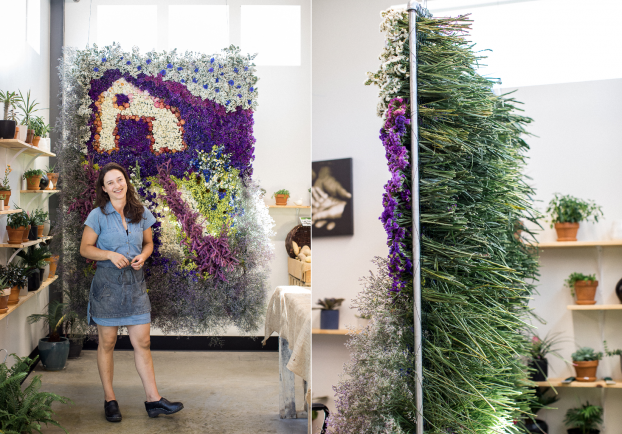
Isabella Thorndike Church of Jacklily Seasonal Floral Design designed a fantastic floral “painting” depicting a barn and fields for American Flowers Week. All photos: (c) Juliet Ashley Photography
This was the case during American Flowers Week when Slow Flowers member Isabella Thorndike Church of Jacklily Seasonal Floral Design in Rogue Valley, Ore., orchestrated a botanical “painting” depicting a barn and fields. She allowed the flower stems to poke through the frame so viewers could see the process up close. As a result, the “back side” of the installation was as popular with customers as the actual “finished” front side.
The spectacle intrigued and inspired viewers to have a go at their own installations, and increased dialogue about the importance of locally sourced flowers. As Isabella explained in an interview we posted to the American Flowers Week web site . . . “people had to touch the flowers to see if they were real. People don’t normally engage, but they were engaging more with this installation piece.”
#5 Vertical, Not Compartmentalized
More florists are becoming their own source for everything from cut flowers to value-added products (such as vases, accessories, linens, tools) as a way to capture more profits and reclaim revenue. The opportunity to “sell to yourself,” has fueled the farmer-florist model, and increasingly, studio and retail florists are planting seeds to attain affordable luxury — flowers to grow and harvest for their own channels.
There are innovative crossover and collaborative opportunities, as well. In 2018, the Slow Flowers Podcast hosted conversations with florists, flower farmers, and artists to discuss the many ways creative floral professionals are expanding their businesses to capture and control more opportunities. For example, we featured flower farmers who are diversifying with new crops like fiber and dye plants; producing new workshops and pursuing sales channels; and we featured retail florists who are planting cutting gardens or small flower farms as they seek inventive ways to bringing more flowers to more people more often. I’m excited to see the innovations continue in 2019.
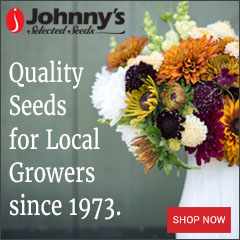 Let’s take a quick sponsor break and thank Johnny’s Selected Seeds, an employee-owned company that provides our industry the best flower, herb and vegetable seeds — supplied to farms large and small and even backyard cutting gardens like mine.
Let’s take a quick sponsor break and thank Johnny’s Selected Seeds, an employee-owned company that provides our industry the best flower, herb and vegetable seeds — supplied to farms large and small and even backyard cutting gardens like mine.
Check them out at johnnysseeds.com.
Next week’s surprise guest will help me reveal Johnny’s 2019 new flower seed introductions, so you’ll definitely want to catch that episode!
#6 Relational, Not Transactional
I keep returning to the oft-quoted Seth Godin adage, “People do not buy goods and services. They buy relations, stories and magic.”
In today’s transactional climate, florists who can find authentic and relevant ways to engage with customers while also doing business are well positioned to ride out downturns or more competition in their marketplace.
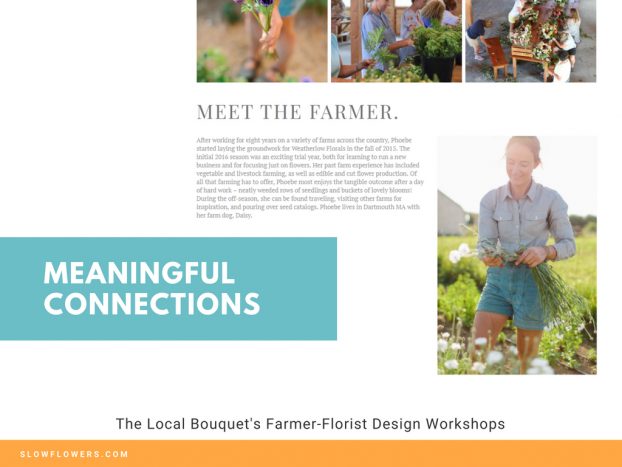
The Local Bouquet’s “Meet the Farmer” design series connects flower lovers with growing and design education.
Meaningful connections (back to experiences over conveniences) have inspired a number of florists to bring their clients closer.
Mary Kate Kinnane of The Local Bouquet, a wedding and event designer based in Little Comstock, R.I., hosts DIY floral design workshops that go well beyond a hands-on session. Her “Meet the Farmer” series creates opportunities for customers to tour and learn from The Local Bouquet’s regular vendors while deepening an appreciation for the studio’s values and brand. Mary Kate’s is just one of many innovated ways that the Slow Flowers community is pursuing authentic connections at a time when consumers are numb to the incessant noise of the marketplace.
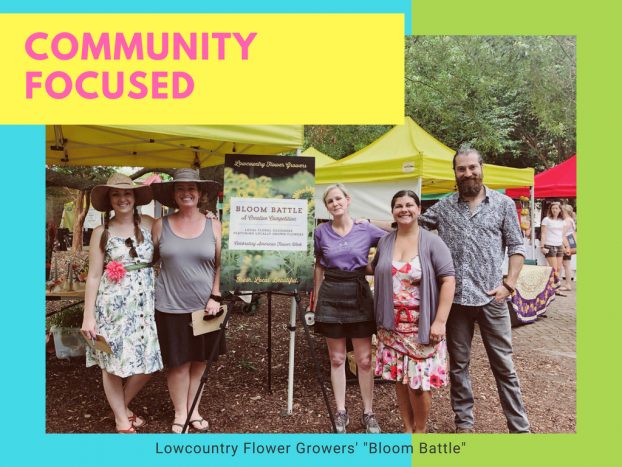
Lowcountry Flower Farmers in Charleston, S.C., brought a popular design event to a local farmers’ market to promote American Flowers Week in 2018
We want to feature more of your stories that underscore this theme. Don’t be shy — please get in touch and let us know how you’re developing those meaningful relationships.
#7 Planted, Not Faux
In prior years, our Slow Flowers Floral Insights report has identified Cultivated Wildflowers, Flowering Native Plants, Modern Everlastings, Luxe Tropicals and the Woodland as new or revived floral styles worth noting. For 2019, there’s no denying that it’s the “Year of the Houseplant.”
The Slow Flowers Journal recently documented the creative ways retail florists are leveraging the current plant craze for their brands. For those who yearn to keep it local, sourcing plants is a mostly domestic practice, reinforcing the brand message they’re already communicating with local and seasonal cut flowers.
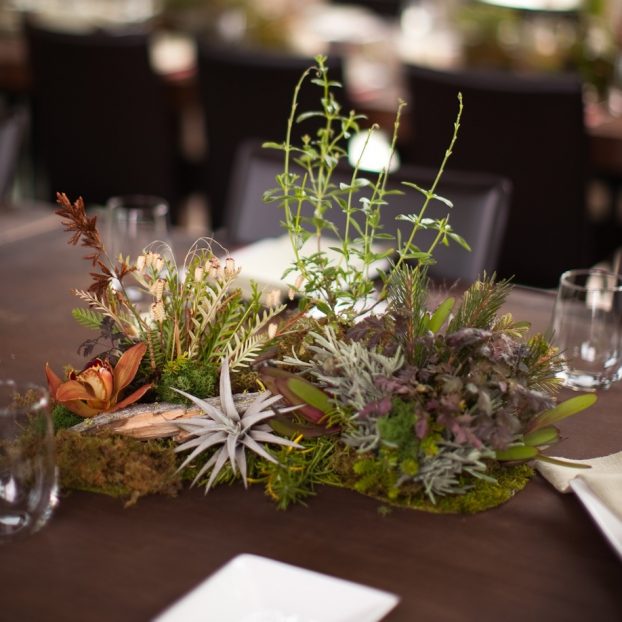
Signature living centerpiece designed by Baylor Chapman of S.F.-based Lila B. Design (lilabdesign.com) (c) Milou and Olin Photography
The power of plants extends further, with corporate greening services, planting workshops and education, as well as a broader design palette for traditionally flower-centric weddings and events. Planting design’s role in floristry is not a short-term trend. Like the cultural shift we’ve witnessed taking place around flower sourcing, the consumers’ embrace of living plants is a phenomenon that’s here to stay. When you emphasize horticulture-based goods and services, you tap into the yearnings of a new customer base, be it houseplant aficionados or those wanting to deepen their relationship with the earth.
I love this comment from Anissa Manzo of Savannah’s Urban Poppy, quoted in the October issue of Florists’ Review: As retailers, in the day of Amazon, we have to create something that’s quite literally tangible for a customer because you can buy air plants and succulents on Amazon. But for creating that intimate relationship with customers, Amazon can’t quite do that yet. I do feel like when I’m selling a plant, I’m selling a pet.
In the same article Lisa Waud of Detroit’s pot + box offered this insight: Our customers are really passionate about plants and want to have an experience where they’re talking to someone who knows as much or more about plants than they do. That accessibility goes along with the branding of a modern plant store.
#8 Transparent, Not Obscured
There are two different but equally relevant themes reflected by the idea of transparent versus obscured. The first relates to many of the items in this report, the idea of being authentic, aka transparent, in how one’s brand is presented to the marketplace. Transparency in our business and sourcing practices is more important than ever. This means aligning images, content, partnerships and practices with the brand values we want to represent. If you see the hashtag #nofilter popping up more often this coming year, it’s clearly a reflection of this sentiment.
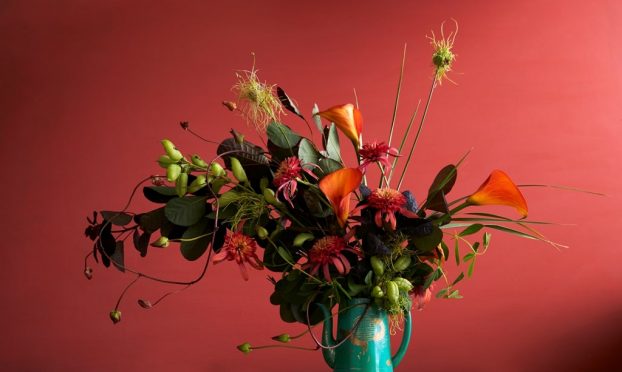
Silhouetted against a blood orange backdrop, an arrangement designed by Stephanie Downes of Seattle-based Vanita (vanitafloral.com) plays with positive-negative space and has an appealing see-through quality (c) Charity Burggraaf Photography
There is another idea of transparency that has captured my attention, and that is an aesthetic one. The open, airy look is moving to center stage, and many progressive and experimental designers are playing with negative space, exposed stems, and simplified structures in their arrangements.
This style isn’t a replacement for the popular concept of seasonal abundance, but it is an approach that heightens the viewer’s attention to each flower, be it a focal or an accent bloom, and one that allows stems to emerge above and beyond the dense center of gravity of a bouquet or centerpiece. Transparent design seems to defy gravity, in fact. I’ve been drawn to this aesthetic and have witnessed the alluring approach of a number of designers recently.
#9 Multi-seasonal, Not Single-Use
Extending the season is a popular concept in flower farming, and now savvy florists are reimagining fresh annuals as dried everlastings, or flowers that have an afterlife as seed heads once petals have dropped.
Further, when ingredients can serve multiple uses — equally valued for the bloom, foliage, bark and pod, they become valuable design elements.
The inspiration here is having an appreciation for all phases of a perennial, shrub or tree. Celebrating the seasonal cycles is yet another way to connect customers with nature while also shifting the idea of beauty away from a flawless hothouse flower and towards nature’s imperfection.
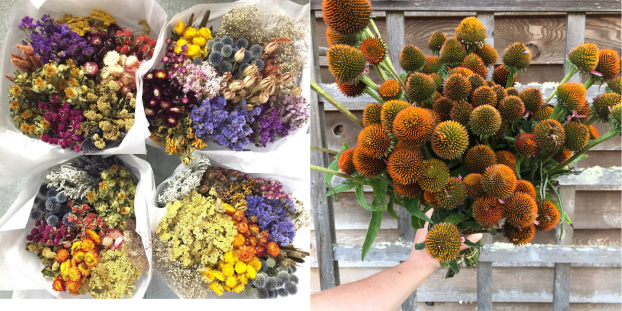
 This notion is not new; in fact, it has been adopted by resourceful flower farmers for centuries. I’m happy to see multi-seasonal botanicals returning to the forefront. Charles Little of Charles Little & Co., a Slow Flowers member farm in Eugene, Oregon, put it best – in an article I wrote for the Johnny’s Newsletter last year:
This notion is not new; in fact, it has been adopted by resourceful flower farmers for centuries. I’m happy to see multi-seasonal botanicals returning to the forefront. Charles Little of Charles Little & Co., a Slow Flowers member farm in Eugene, Oregon, put it best – in an article I wrote for the Johnny’s Newsletter last year:
“I still love the things that give you two or three opportunities to harvest. Whether it’s the flower in the spring or the pod in the fall, it’s always great to have some kind of backup plan for a flower. Certainly, we grow statice, ammobium, and strawflower… all are great dried flowers, but they’re almost better as cut flowers.”
#10 Community, Not Solitary
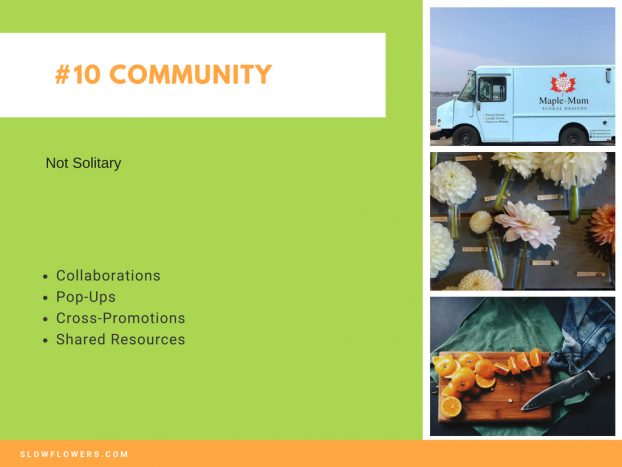 We’ve seen the phrase “community over competition,” and I, for one, believe that is the only way to differentiate ourselves in the noisy global marketplace where authentic connections are rare.
We’ve seen the phrase “community over competition,” and I, for one, believe that is the only way to differentiate ourselves in the noisy global marketplace where authentic connections are rare.
I’m seeing Maker Collectives where florists and growers merchandise flowers and arrangements alongside specialty food, fashion or art venues. I’m amazed at the proliferation of wholesale hubs where flower farmers connect directly with floral designers. Co-working spaces, the sharing of infrastructure and equipment between flower farmers, collaborative floral installations for public good . . . these actions are taking place more often than ever before as intentional and meaningful ways to create community and foster a sense that we are part of something bigger than commerce. Rather, a mission to change our own marketplace for better results.
I recently joined Twin Cities Flower Exchange founder Christine Hoffman for a gathering of local flower farmers and florists at her flower hub in St. Paul, Minn., where together, these floral entrepreneurs are fostering a dynamic wholesale marketplace for local flowers.
They have shifted the conversation and brought local and seasonal flowers to the attention of buyers and the media. They have encouraged new flower farmers to get started and have guided florists to explore more sustainable sourcing practices. They have changed the conversation and it’s not only exciting, it’s changing lives for the better.
BONUS INSIGHTS
I want to wrap up with two bonus insights. They may fly in the face of conventional assumptions but that’s indeed how change takes place. I want you to be aware of these shifts on the horizon, regardless of whether they apply to you or your business.
#11 Cannabis Nation, Not Taboo Topic
Okay, I live in Washington State, so pot is legal here. And to be perfectly truthful, I am not a partaker, preferring chardonnay as my controlled substance.
However, all you have to do is search instagram for the hashtags #cannabisflorist or #cannabisfloralarrangements and you’ll may be as surprised as I was to see hundreds of posts.
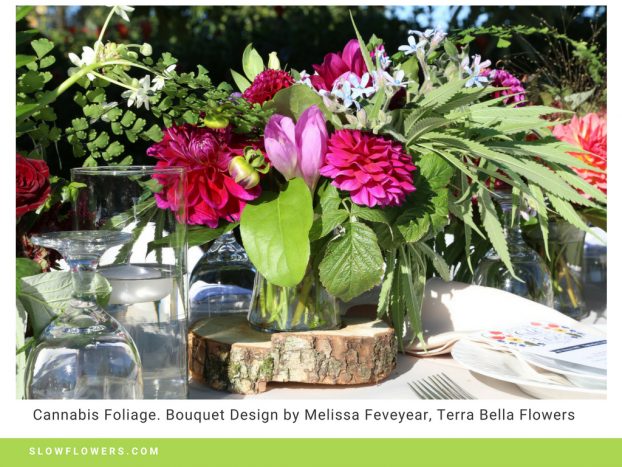 There are flower farmers who have begun to grow hemp and cannabis for non-floral products and health care use. There are florists who have begun to design with the foliage of the male cannabis plant, which anecdotally, we’re heard has incredible vase life. Cannabis is now perceived as a value-added crop, as a novelty floral item and more. Clearly, this is a special niche serving a distinct demographic. And it may not be for you. But it’s an idea worth tracking in the coming months.
There are flower farmers who have begun to grow hemp and cannabis for non-floral products and health care use. There are florists who have begun to design with the foliage of the male cannabis plant, which anecdotally, we’re heard has incredible vase life. Cannabis is now perceived as a value-added crop, as a novelty floral item and more. Clearly, this is a special niche serving a distinct demographic. And it may not be for you. But it’s an idea worth tracking in the coming months.
#12,#grownnotflown OR #shippingfordollars?
There are some of you who ascribe to the belief that local flowers should only be sold to local customers. And then there are others, increasingly, who are enterprising and entrepreneurial floral professionals seeking new markets for their flowers. 2018 was the year in which small-scale flower farms began to experiment with shipping their flowers to new markets, mostly to florists hungry for their specialty crops.
I believe there is a way to stay true to your Slow Flowers brand but to also take advantage of a larger pipeline for selling what you grow. After all, the term “sustainable” also relates to the need for flower farmers to make a sustainable living from their land.
There are ways to satisfy demand if you’re willing to take the leap. It means determining specific value-added crops that can be affordably shipped as well as creating a story that sells your flowers, in spite of the hassles and other perceived barriers to shipping. There are pioneers to emulate and we’ve told many of their stories through Slow Flowers articles and interviews.
The North American floral market is NOT saturated when it comes to seasonal flowers. But the best customer may not be in your 50-mile radius. Where can you penetrate with a differentiated floral product? That is your challenge to explore in 2019 and I’ll bring you new voices and ideas to assist your research.
Well, that’s it — 10 insights and 2 bonus ideas — and you can be sure I’ve already started a folder called 2020 insights; as it takes a full year to observe, listen and collect input for the annual Slow Flowers Floral Insights and Industry Forecast. I’d like to encourage you to share your thoughts with me! Get in touch at debraprinzing@gmail.com.
 Our final sponsor thanks today goes to Longfield Gardens. Longfield Gardens provides home gardeners with high quality flower bulbs and perennials. Their online store offers plants for every region and every season, from tulips and daffodils to dahlias, caladiums and amaryllis. Visit them at longfield-gardens.com.
Our final sponsor thanks today goes to Longfield Gardens. Longfield Gardens provides home gardeners with high quality flower bulbs and perennials. Their online store offers plants for every region and every season, from tulips and daffodils to dahlias, caladiums and amaryllis. Visit them at longfield-gardens.com.
An update about the Slow Flowers Summit: First of all, we’ve been running an Early Bird ticket promotion for the Slow Flowers Summit 2019 and that opportunity has closed.
Nearly 50 of you took advantage of the early bird pricing — and we will sell out the conference at 150 registrations. So don’t have FOMO — you’ll want to make your way to slowflowerssummit.com to learn all about the many opportunities to join us — from flower farm tours and dinner on a flower farm to business and branding presentations to interactive and inspiring design sessions . . . all designed to serve you! Slow Flowers members will still enjoy discount pricing up until the day of the Summit.
Sign up here to receive updates on our program and activities.
We have a vital and vibrant community of flower farmers and floral designers who together define the Slow Flowers Movement. As our cause gains more supporters and more passionate participants who believe in the importance of the American cut flower industry, the momentum is contagious.
I know you feel it, too. I value your support and invite you to show your thanks and with a donation to support my ongoing advocacy, education and outreach activities. You can find the donate button in the column to the right.
The Slow Flowers Podcast has been downloaded more than 393,000 times by listeners like you. Thank you for listening, commenting and sharing – it means so much. Thank you all!
I’m Debra Prinzing, host and producer of the Slow Flowers Podcast. Next week, you’re invited to join me in putting more American grown flowers on the table, one vase at a time. And If you like what you hear, please consider logging onto iTunes and posting a listener review.
The content and opinions expressed here are either mine alone or those of my guests alone, independent of any podcast sponsor or other person, company or organization.
The Slow Flowers Podcast is engineered and edited by Andrew Brenlan. Learn more about his work at soundbodymovement.com.










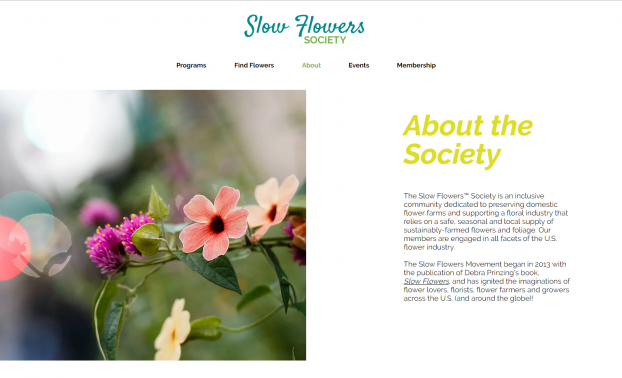
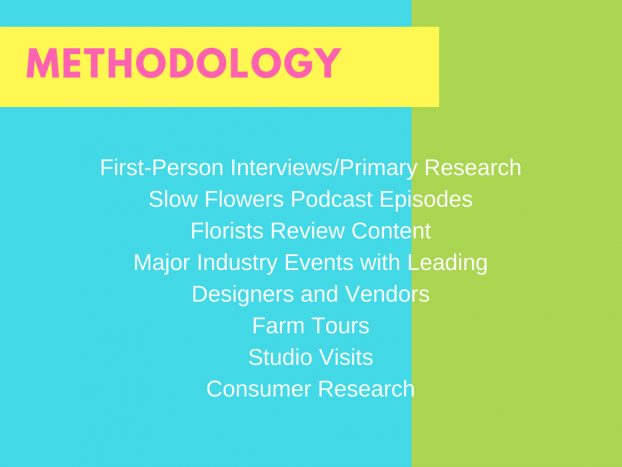
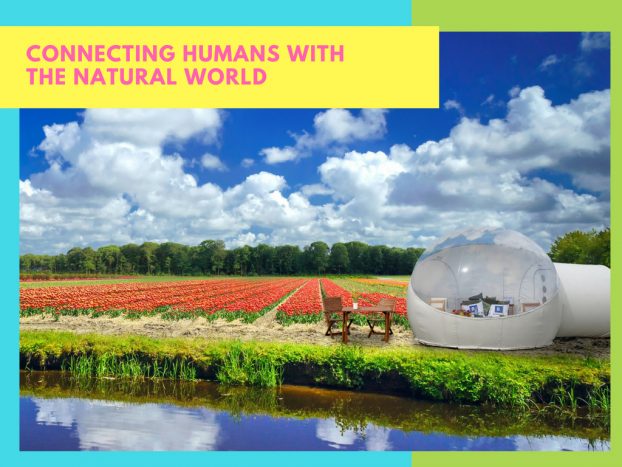
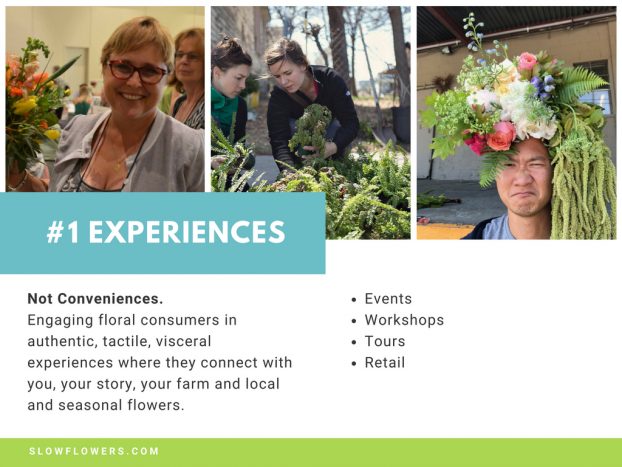
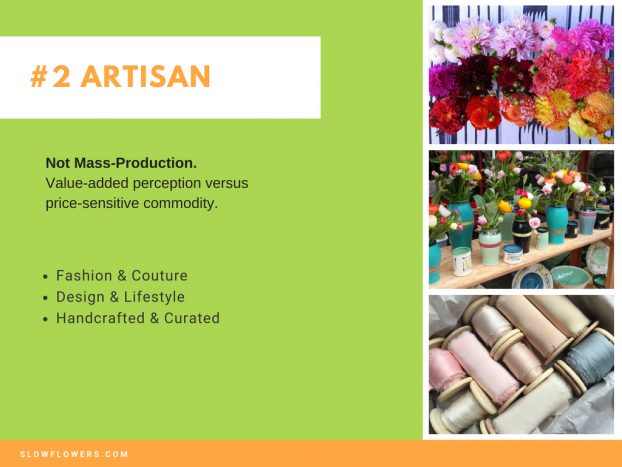
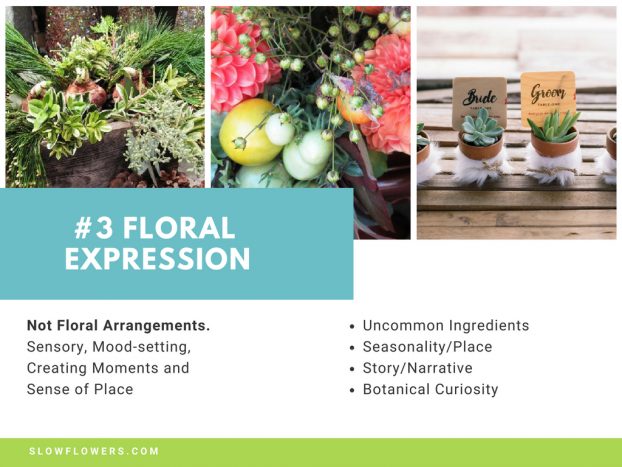
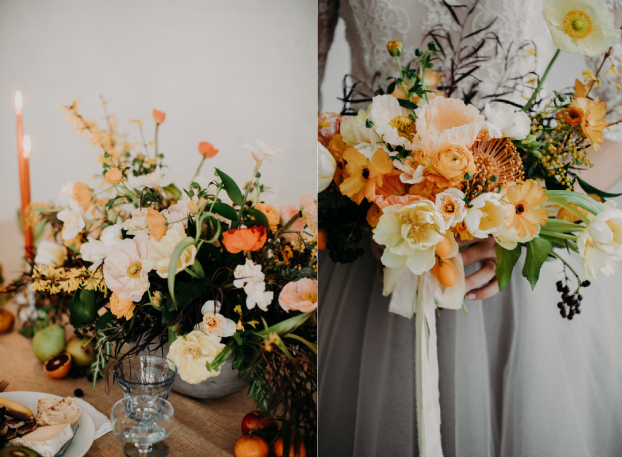
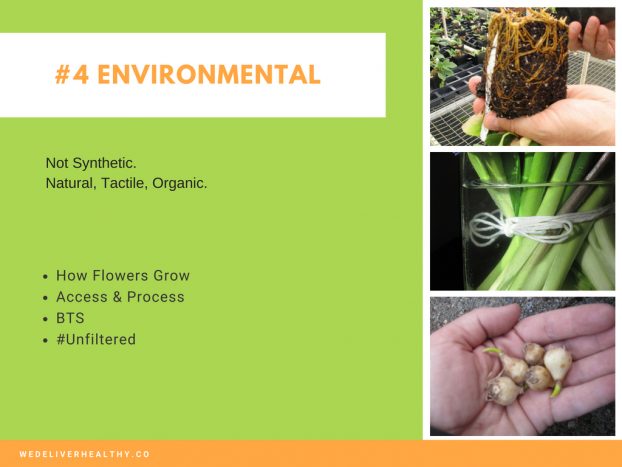
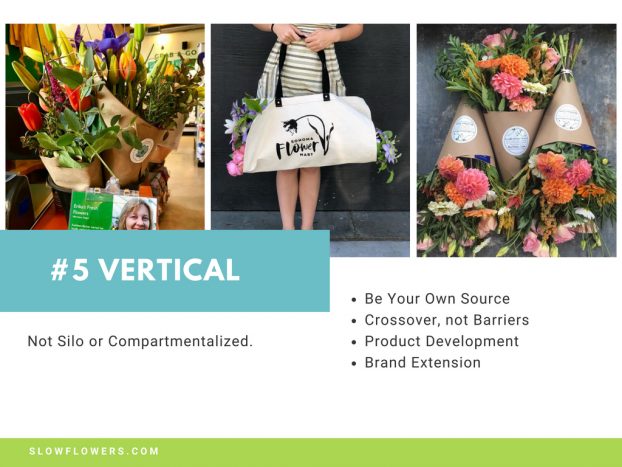
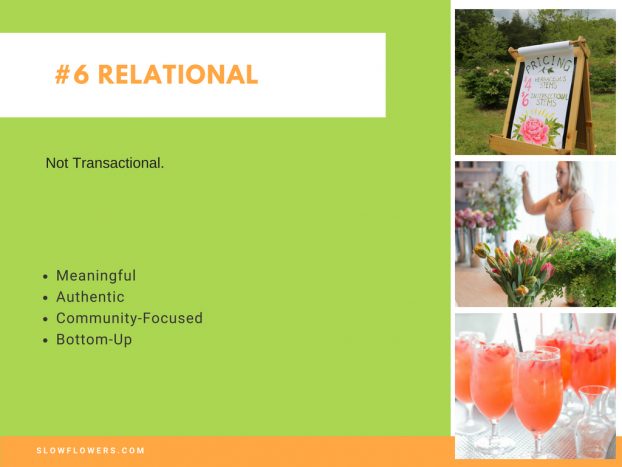
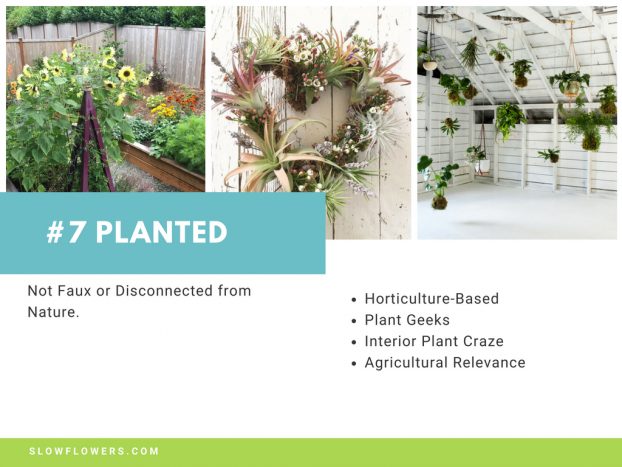
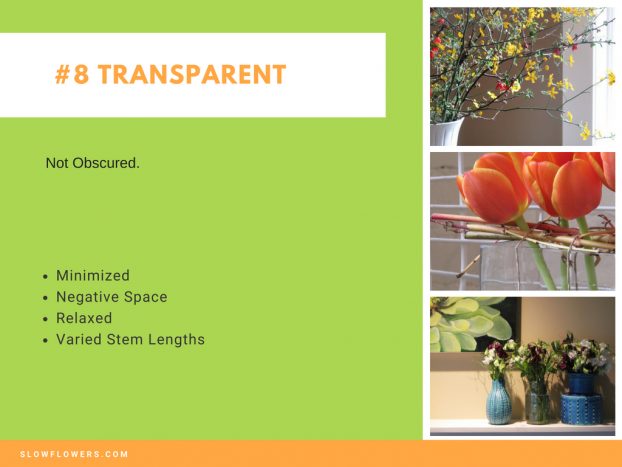
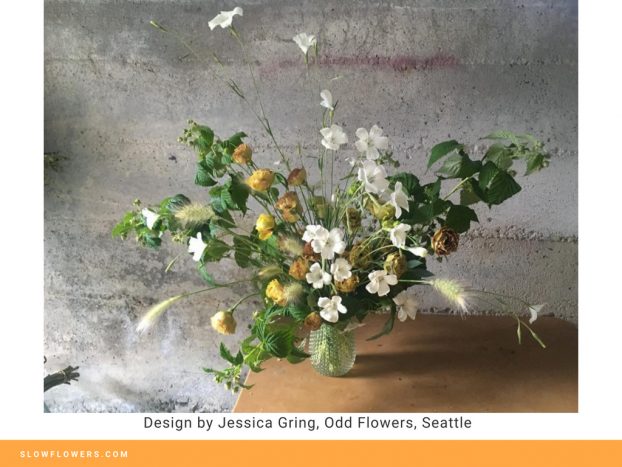
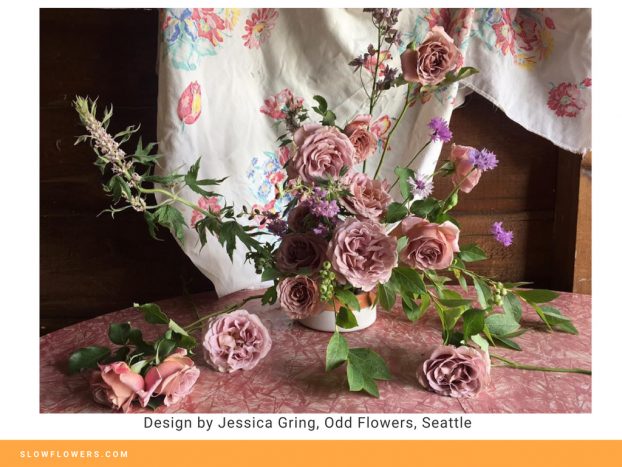
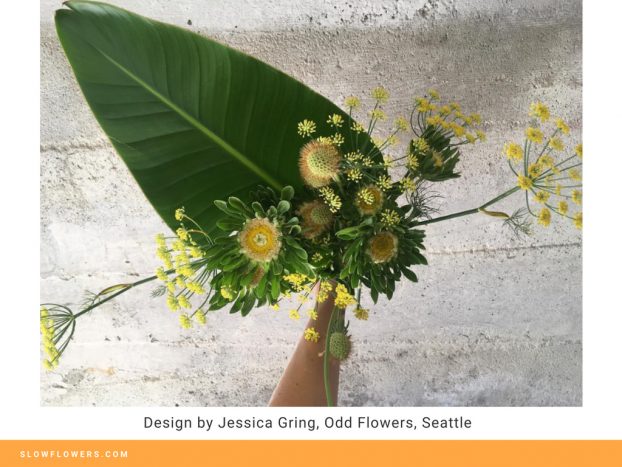
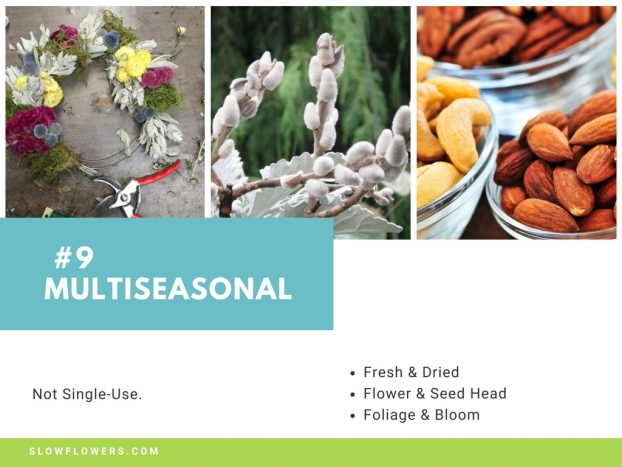
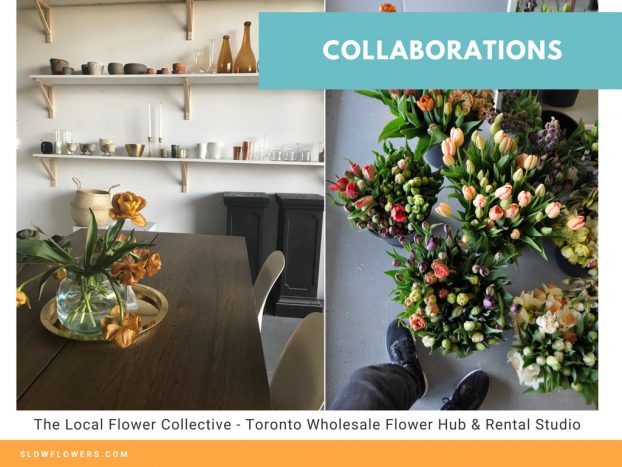
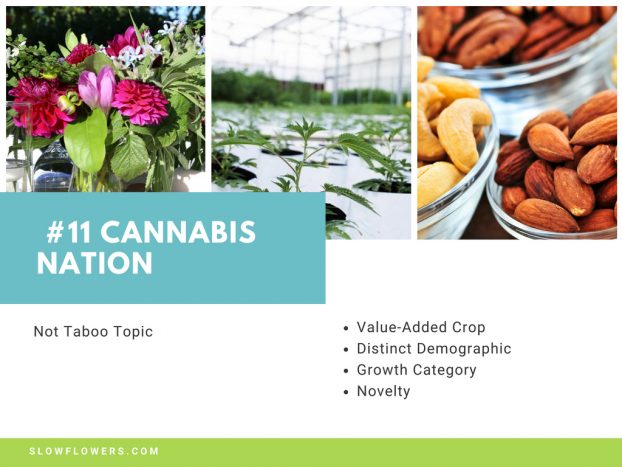
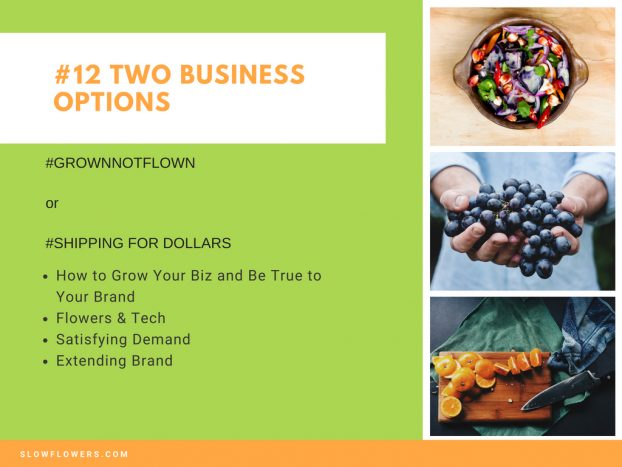
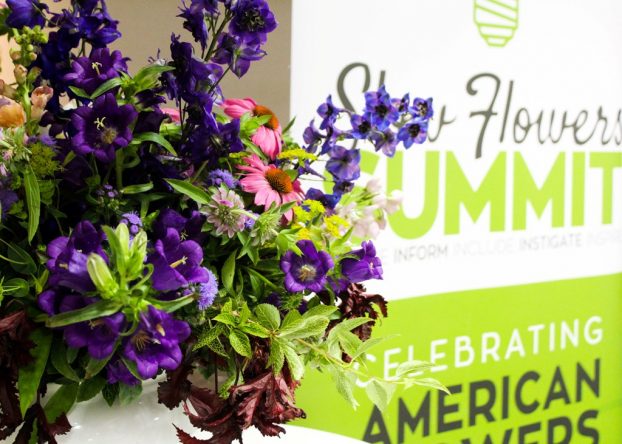
January 2nd, 2019 at 6:33 pm
[…] Flowers. Please visit our newly-branded site on the web — SlowFlowersSociety.com. […]Episode 382: Slow Flowers’ 2019 Floral Insights & Industry Forecast this post has been replublished from the original […]
December 12th, 2021 at 3:30 pm
[…] I’ve touched on similar themes, including the popularity of Aromatherapy Bars (2018) and the Year of the Houseplant (2019). Floral Wellness is more sweeping in its meaning. More than ever, consumers and their senses are […]